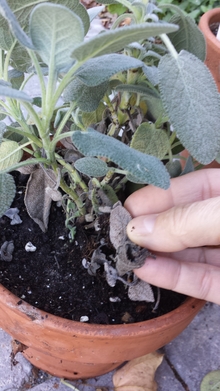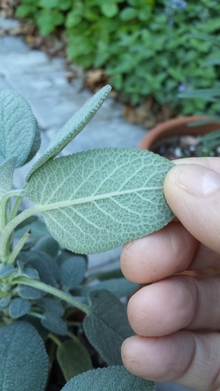How to manage insects on indoor plants
November 15 , 2021
Agronotips
Agronotips - Conventional Agriculture
More News
Top Stories

The content of this article 'How to manage insects on indoor plants' was prepared by The University of Minnesota Extension and has been revised and republished by FreshFruitPortal.com.
For the latest information, check the University of Minnesota's website here.
Healthy plants have fewer pest problems
Prevent, or at least minimize, pest issues on indoor plants by choosing the right plants and providing good overall plant care. Learn about basic care and growing needs for your plant.
Grow plants in the best possible conditions
- Select plants with growing requirements that match the indoor environment (humidity, light, temperature).
- Plants cannot fight off pests when they are struggling to grow in too little light, overly wet or dry soil, too hot or too cold air temperatures, etc.
Water plants properly
- Know how much water your plant needs.
- Water the soil at the base of the plant, not the leaves.
- Be sure the plant's pot drains well.
- Avoid letting plants stand in water.
- Over-watering and poor drainage can cause root rot and encourage fungus gnats as well as other pest issues.
 Remove dead leaves and flowers
Remove dead leaves and flowers
Understand nutritional needs
- Apply fertilizer at half the recommended strength.
- Fertilize when the plant is actively growing.
Keep plants clean
- Keep soil surface free of dead leaves, stems and flowers.
- Wash plant leaves with a damp cloth as dust and grime can reduce plant health. Never use leaf shine products or milk.
- Prune out dead branches and stems.
Use new, sterile potting soil when potting plants
- Never pot indoor plants using soil from the garden.
- Avoid using soil from open bags of potting soil that have sat outside for potting indoor plants. Save it for your outside pots.
- Plant in clean pots and wash soil off of plant roots.
 Check the underside of leaves
Check the underside of leaves
Early detection is key to managing pests
Finding pests before they become a problem is the best way to keep insects at bay.
- Thoroughly examine all plant parts and containers before bringing them home from the store or indoors for the winter.
- You may need to use a magnifying lens as some pests are very small.
- Inspect tops and undersides of leaves for insects, webbing, holes and eggs.
- Examine leaves that are discolored as this may be evidence of a pest problem.
- A ten-power hand magnifying lens is helpful when looking for pests. There are also magnifier apps for smartphones.
- Examine leaves that are discolored as this may be evidence of a pest problem.
 Honeydew on hoya
Honeydew on hoya
- Watch for honeydew, a shiny, sticky substance made by aphids, mealybugs and scale insects found on the upper surface of leaves as well as on tabletops and other items around and under the plant.
- Check plant containers for signs of pests along edges, rims, the bottom of pots, saucers, crevices. Remove if found.
- Isolate newly acquired plants for one to two weeks to allow any possible pest problems to become visible.
- Check for pests when you water, fertilize or clean plants.
 Yellow sticky card trapping flies
Yellow sticky card trapping flies
-
- Some insects like springtails and fungus gnats will move due to the water, making it easier to detect them.
- Use yellow or blue sticky traps to detect flying insects like whiteflies, fungus gnats, winged aphids and thrips.
Watch for more detailed information on managing common pests coming in the next article.









































